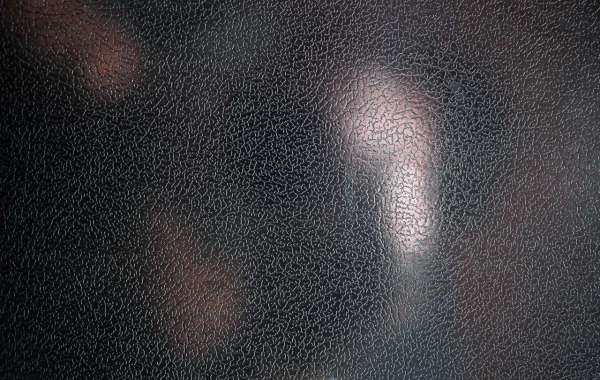Laser metal cleaners are an advanced technology used for removing contaminants like rust, paint, or oxide layers from metal surfaces. However, before diving into the use of this technology, there are several critical factors to understand. These factors go beyond the basic operation of the machine and delve into aspects such as safety, material compatibility, maintenance requirements, and operational efficiency. This detailed guide will walk you through these considerations, ensuring you have a comprehensive understanding before utilizing a laser metal cleaner.
1. Understanding the Laser Technology
Laser metal cleaners work by emitting a focused beam of light energy that interacts with the surface material. The laser energy is absorbed by the contaminants, causing them to vaporize or be removed through a process called ablation. The key to successful cleaning lies in the correct calibration of the laser's parameters—power, wavelength, and pulse duration.
Laser Power: The power setting determines the intensity of the laser beam. Higher power is required for removing tough contaminants like thick rust, while lower power is sufficient for lighter surface cleaning. Using inappropriate power settings can damage the underlying metal.
Wavelength: The wavelength of the laser light affects how it interacts with different materials. Most laser metal cleaners operate in the infrared spectrum, which is effective for most metals. However, different wavelengths might be required for certain materials or coatings.
Pulse Duration: This refers to the length of time the laser is active in each pulse. Short pulses are typically used for delicate cleaning, while longer pulses may be needed for more intensive cleaning tasks. Incorrect pulse duration can lead to incomplete cleaning or surface damage.
2. Safety Considerations
Operating a laser metal cleaner involves significant safety risks if proper precautions are not taken. Understanding and adhering to safety protocols is crucial to prevent accidents or injuries.
Laser Safety Classes: Lasers are classified into different safety classes based on their power and potential hazards. Most laser metal cleaners fall into Class 4, which is the highest risk category. This means they can cause severe skin burns and permanent eye damage if direct or reflected beams come into contact with the body. Appropriate safety measures, including protective eyewear and barriers, are mandatory.
Ventilation and Fume Extraction: During the cleaning process, the laser vaporizes contaminants, which can release harmful fumes and particulates into the air. A proper ventilation system and fume extraction unit are essential to protect the operator and maintain a safe working environment. These systems help to capture and filter out hazardous substances, ensuring that the air remains clean and breathable.
Training and Certification: Operating a laser metal cleaner requires specialized training. Understanding the machine's operation, the potential hazards, and the emergency procedures is essential. Many regions require operators to obtain certification to use high-power lasers legally. This certification process ensures that operators are fully aware of the risks and know how to manage them effectively.
3. Material Compatibility
Not all metals and surface contaminants react the same way to laser cleaning. Before using a laser metal cleaner, it’s essential to understand how different materials will respond to the laser beam.
Metal Types: Common metals like steel, aluminum, and copper are typically compatible with laser cleaning. However, metals with reflective surfaces, such as gold or silver, can reflect the laser beam, which might reduce cleaning efficiency or damage the machine. In such cases, specific adjustments to the laser parameters are necessary, or an alternative cleaning method might be required.
Surface Coatings and Treatments: Some metals have coatings or treatments that can be sensitive to laser cleaning. For example, anodized aluminum or galvanized steel may have coatings that are difficult to remove without damaging the underlying metal. Testing a small area first or consulting with the laser cleaner manufacturer can help determine the best approach.
Contaminant Types: The type of contaminant also plays a role in the effectiveness of laser cleaning. While rust, paint, and oxides are commonly removed, organic materials like oil or grease might require pre-treatment or additional cleaning steps. Laser cleaning might not be effective on thick layers of organic materials, necessitating alternative cleaning methods.
4. Operational Efficiency and Costs
Laser metal cleaners are known for their efficiency, but it’s important to understand the operational aspects and associated costs before use.
Energy Consumption: Laser cleaners consume a significant amount of electricity, especially at higher power settings. Understanding the energy requirements and ensuring your facility can support the machine’s power needs is crucial. Additionally, high energy consumption can lead to increased operational costs, which should be factored into your budget.
Maintenance Needs: Regular maintenance is essential to keep the laser cleaner functioning optimally. This includes cleaning the laser optics, checking the cooling systems, and ensuring that all moving parts are well-lubricated. Neglecting maintenance can lead to reduced efficiency or even damage to the machine, resulting in costly repairs or downtime.
Downtime and Productivity: While laser cleaning is efficient, it’s important to account for potential downtime due to maintenance or adjustments. Additionally, the speed of cleaning can vary depending on the material and contaminant type. Understanding these factors will help you plan your workflow and manage productivity expectations.
5. Environmental Considerations
Laser metal cleaning is often touted as an environmentally friendly process because it doesn’t require chemical solvents. However, there are still environmental factors to consider.
Waste Management: Although laser cleaning doesn’t produce chemical waste, it does generate dust and particulates. Proper waste management procedures should be in place to handle and dispose of these byproducts responsibly. This might include collecting and filtering particulates to prevent them from contaminating the environment.
Energy Use and Carbon Footprint: The energy-intensive nature of laser cleaning contributes to your overall carbon footprint. Depending on the source of your electricity, this could have environmental implications. Consider ways to offset your energy use, such as using renewable energy sources or implementing energy-saving practices elsewhere in your operation.
Noise Pollution: Laser cleaning machines can produce noise, particularly at higher power levels. This noise can contribute to noise pollution in the workplace, affecting the comfort and safety of workers. Implementing noise control measures, such as soundproofing or using ear protection, is essential in minimizing this impact.
6. Regulatory Compliance
Depending on your location and industry, there may be specific regulations governing the use of laser cleaning equipment. It’s important to be aware of these regulations to avoid potential legal issues.
Occupational Safety and Health Administration (OSHA) Standards: In the United States, OSHA sets standards for laser safety in the workplace. Compliance with these standards is mandatory and includes requirements for protective equipment, training, and operational procedures. Non-compliance can result in fines or other penalties.
Environmental Regulations: Some regions have environmental regulations that govern the emission of fumes and particulates from industrial processes. Ensure that your laser cleaning operation complies with these regulations, particularly if you are operating in a densely populated area or near sensitive environments.
Industry-Specific Standards: Certain industries, such as aerospace or automotive, may have additional standards or certifications required for laser cleaning. These standards often relate to the quality and consistency of the cleaning process, ensuring that the cleaned components meet stringent industry requirements.
Conclusion
Using a laser metal cleaner involves much more than simply operating the machine. From understanding the technical aspects of the laser to ensuring safety, material compatibility, operational efficiency, and regulatory compliance, there’s a lot to consider. By taking the time to fully understand these factors, you can ensure that your laser cleaning process is effective, safe, and compliant with all relevant regulations. This thorough approach not only enhances the quality of your cleaning operations but also helps to protect your investment in this advanced technology.








